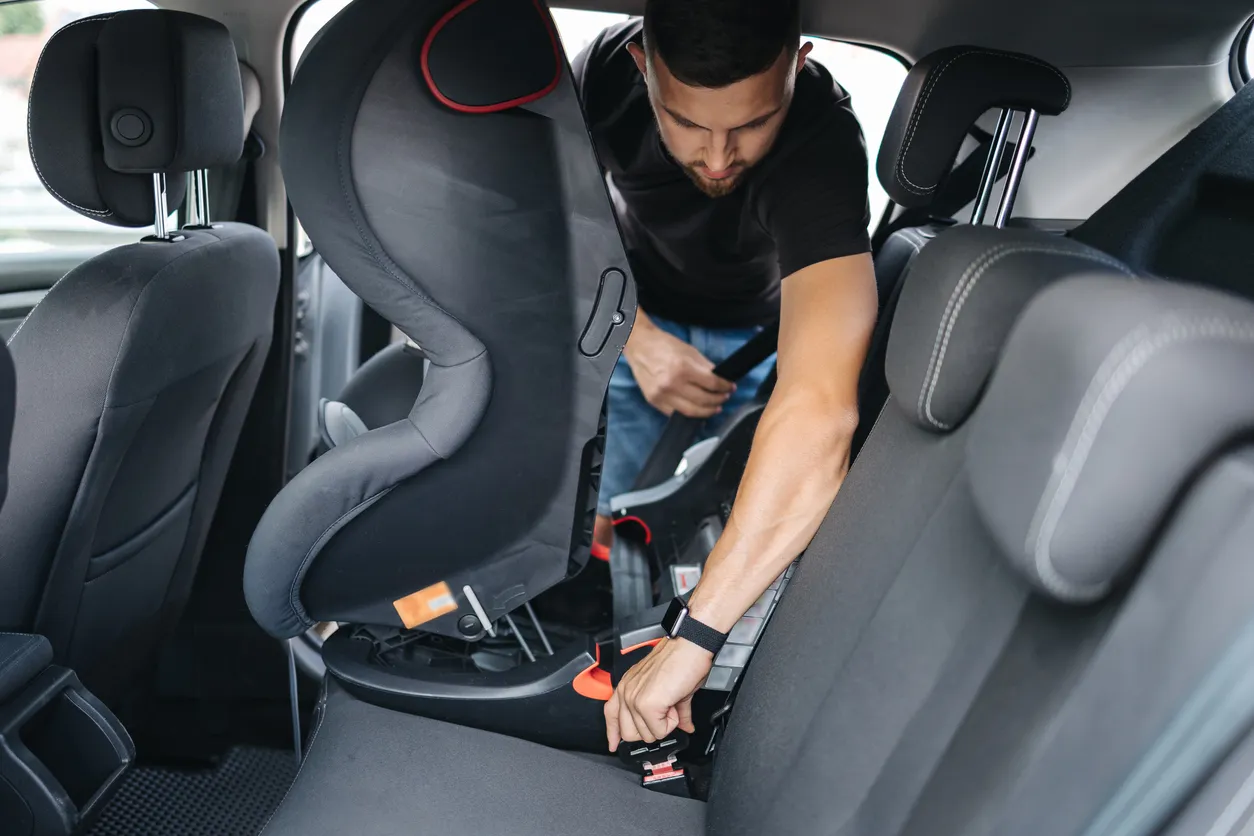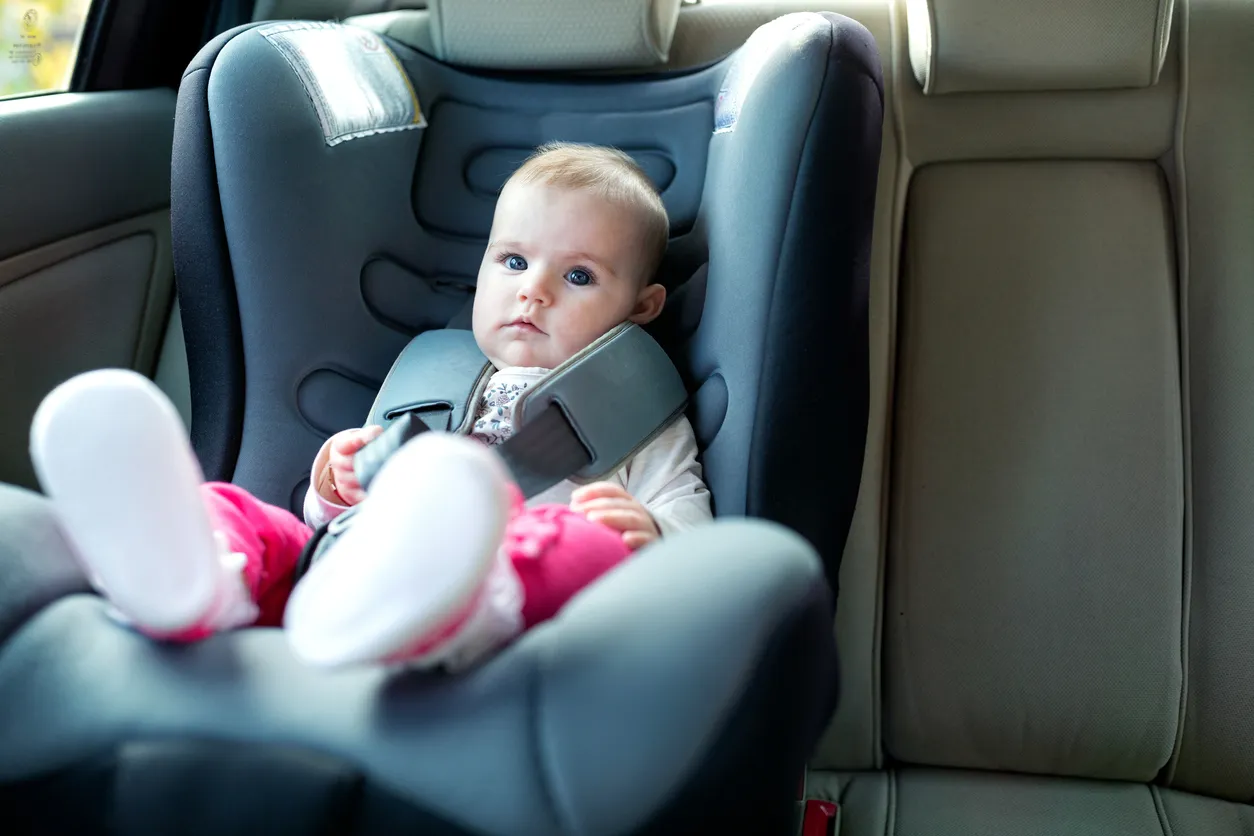A Full Guide on Car Seats

Using the proper car seat is one of the most crucial methods to keep our kids safe, and as parents, we're always seeking new ways to accomplish this. It might be confusing to select the best car seat for your child's age and size with so many different models available. In order to make sure your child is snug and safe for every journey, the professionals here at GoodCar will go over all you need to know about car seats, including the various types and important tips on how to properly install them in your vehicle.
Why Are Car Seats So Important?
Children are frequently killed and injured in automobile accidents, but using car seats greatly lowers the likelihood of either of these terrible consequences. In passenger automobiles, car seats lower the chance of fatal injury by 71% for infants and 54% for toddlers, according to the National Highway Traffic Safety Administration (NHTSA). The American Academy of Pediatrics (AAP) also advises parents to keep their children in a car seat until they are at least 4'9" tall, the height at which seat belts are intended to fit comfortably.
Types of Car Seats
There are various different kinds of car seats that are each made for a certain age range and weight range. Below is a list of the various car seat varieties:
Rear-Facing Car Seats
Rear-facing car seats are intended for infants and early toddlers, usually up to 2 years old or until they reach the manufacturer's recommended maximum weight or height. The back seat of the automobile is the ideal location for these car seats. A rear-facing car seat protects the child's head, neck, and spine during a collision, reducing the risk of catastrophic damage.
Forward-Facing Car Seats
The age range for children who should use a forward-facing car seat is normally from 2 to 5 years old, or until they reach the manufacturer's recommended maximum weight or height. As with rear-facing seats, the back seat of the automobile is the ideal location. A forward-facing car seat lowers the risk of harm in an accident by dispersing the power of the impact over the child's strongest body parts.
Booster Seats
Booster seats are intended for kids between the ages of 5 and 12 who have outgrown their forward-facing car seats but are still too tiny to utilize a seat belt alone. Until a kid is big enough to fit comfortably in a seat belt, which is often when they are 4'9" tall, booster seats should be utilized. In order to provide a correct fit and optimum protection in the case of an accident, booster seats raise the kid and put the seat belt over their lap and shoulder.

Combination Car Seats
Combination car seats are made to change from a forward-facing car seat to a booster seat as the kid gets older, usually between the ages of 2 and 8 or until they hit the manufacturer's maximum weight or height requirements. These car seats are a popular option for many parents because of their adaptability and capacity for long-term usage.
All-in-One Car Seats
All-in-one car seats are intended to be used from birth until the kid is old enough to use a booster seat, usually up to age 12 or until the child meets the manufacturer's recommended maximum weight or height. These convertible car seats are a terrific investment for parents looking for a car seat that will grow with their child because they can be changed to meet their size and age.
Installation and Use
For optimal safety, it's crucial to install and utilize the car seat you've chosen for your child properly. Here are some pointers for correctly using and installing a car seat:
- Read the instruction manual: Read the manufacturer's handbook thoroughly before installing the car seat to make sure you know how to set it up and use it.
- Use the right installation method: The LATCH system and the seat belt system are the two main kinds of car seat installation techniques. Be sure the installation technique you select is suitable for your vehicle and the car seat you are using. Others can be installed using either the LATCH or seat belt systems, while certain car seats can only be installed using the LATCH system.
- Check the angle: To prevent the child's head from flopping forward, rear-facing car seats should be placed at a reclined angle. To ensure that the car seat is placed correctly, check the angle indication in the manual.
- Tighten the harness: There should be no slack and the harness should fit the child's body tightly. Make sure the harness is secure enough by using the tightness indicator.
- Placement of the chest clip: The chest clip should not be placed on the stomach or neck, but at armpit level. In the case of an accident, this helps keep the youngster from slipping out of the harness.
- Make sure the seat is secure: As soon as the car seat is installed, shake it to check that it doesn't move more than one inch from side to side or from front to back. If it does, it was improperly placed.
- Keep your child rear-facing as long as possible: Children should ride in a car seat that faces the back of the car until they are at least 2 years of age, or until they meet the manufacturer's top weight or height restrictions, according to the AAP. Little children are better protected in rear-facing car seats in the case of a collision.
- Follow weight and height limits: Ensure that the car seat you are using is suitable for the size and weight of your child. Car seats have weight and height restrictions for a reason, and going above those limitations jeopardizes the seat's safety.
Be sure to follow each of the aforementioned steps carefully when installing and utilizing car safety seats. Avoid common mistakes that occur when manufacturer’s guidelines are ignored to ensure the safety of your beloved family members.
Important Car Seat Note
One thing that we believe is important to inform people of is that car seats do expire, often between 6 years and 10 years after the date they were made. Using an expired car seat can put children in danger in the event of any type of vehicle accident since the car seat has more wear and tear, is potentially more brittle, and is often not as technologically advanced. They expire because of issues like changes to car seat regulations, improvements in technology, and even recalls. To find the expiration date on a car seat, check the manufacturer’s label on the bottom of the seat. If the sticker is gone, it is best not to put your child in that car seat and to buy a new one.
Car Seats Are Essential Safety Equipment
Your child's car seat selection is a significant decision that needs to be well thought out. It's essential to pick a car seat that fits your child properly and offers the most protection in the case of a collision. For optimal safety, it's also essential to carefully install the car seat. By adhering to the recommendations above, you may guarantee your kid's safety and security inside the vehicle, giving you peace of mind and shielding your youngster from the potentially fatal repercussions of auto accidents. If you are looking for a newer vehicle with LATCH systems or more modern car seat amenities, run a vehicle history report on any vehicles you’re considering, and let us help!
FREE Vehicle Search
- Accidents
- Problem Checks
- Title Records
- Recalls
- Values
- Specs
-
InfoPay, Inc. (dba GoodCar) is an Approved NMVTIS Data Provider
-
-

















































